Not long ago as I was going through the checkout line at Safeway, the cashier looked at my bottle of Megachef fish sauce and asked, “What is this?” I explained it to her and she remarked how hard it was to figure out. “Anchovy Sauce” seemed gross to her. We laughed at how unappealing that phrase was but I assured her that the condiment was key to Vietnamese and Thai cooking.
I had had a similar conversation with my hairstylist. Because of Crohn’s disease, Ashley has been on a gluten-free diet and preparing more Asian food. She purchased Thai ingredients from Safeway but things didn’t taste very good. I suggested that it may have been the fish sauce she bought.
Such conversations, as well as chats that I’ve been having with food media about the pho book, got me thinking about fish sauce basics. I recently wrote a “Beginner’s Guide to Fish Sauce” (including how it’s made!) for Lucky Peach. For this post on VWK, I’d like to dial things down to the basics: how do you shop for fish sauce, then how do you use it. If you have experiences or tips to add, please do!
Shopping for fish sauce isn’t easy. Here’s the fish sauce section at a supermarket in Saigon. That’s about fifteen feet of nuoc mam (“nook mahm”) to choose from.
At the top of this post is an image of most of the fish sauce I currently have in my kitchen. You don’t need to have that many. You only need one bottle to cook up a storm of Viet food.
Where to buy fish sauce? It’s sold at many supermarkets in the Asian food section. Lucky you! When my family arrived in the U.S. in 1975, there was no fish sauce at American grocery stores. We used La Choy soy sauce.
Nowadays at the Ralph’s market near my parent’s house in San Clemente (where I grew up), there are several brands of fish sauce to choose from, including Three Crabs by Viet Huong. Below are the brands at my Santa Cruz grocery stores -- Safeway, Luckys and Whole Foods and other small, non-chain markets.
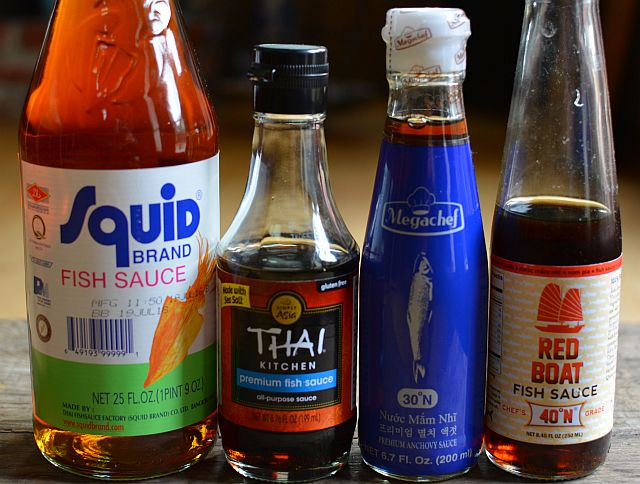
If you venture to an Asian market, you’ll find more options in the condiment aisle and the prices are lower than at regular supermarkets. Naturally, markets in Little Saigon Vietnamese enclaves have the greatest range, but that’s not always a good thing; some of brands they carry are not terrific.
Chinese, Thai, and Filipino markets have lots of nam pla (Thai) and patis (Tagalog), too. Korean markets have fish sauce because it’s an ingredient in making kimchi and other dishes. If you trust an Asian market for other ingredients, by extension, it’s likely to have good fish sauce too.
Japanese markets usually don’t carry much in terms of fish sauce, because their version, called shottsuru, is a relatively obscure ingredient these days. I proved myself wrong last week when I saw this range of fish sauce at Tokyo Fish Market in Berkeley, California.
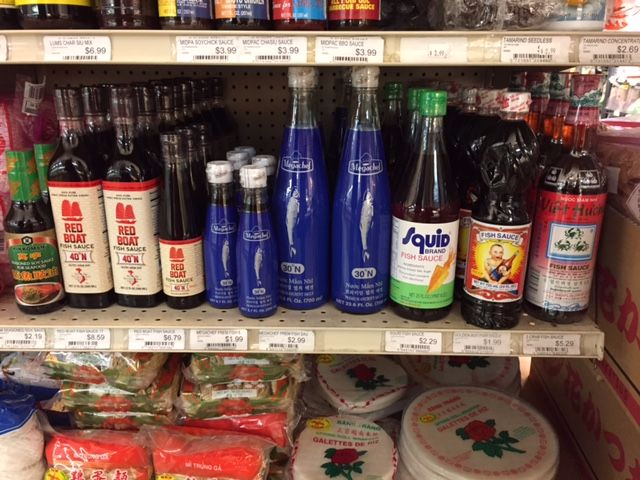
When looking for fish sauce at Asian markets, scan toward the bottom of the shelves. Maybe in the event of an accident, the bottles don’t have far to fall?
What brands of fish sauce are good? You don’t have the luxury or curiosity like I do to try different brands. At a regular supermarket, try Megachef “Anchovy Sauce” in the little bottle for roughly $2.59. It’s an all-around great fish sauce from Thailand, and affordable to boot.
Stores like Whole Foods do not carry Megachef but they do have Red Boat, an excellent artisanal brand from Vietnam. Over the years, I’ve tried Thai Kitchen and Squid brands and found them to be flat tasting and difficult to use to obtain the umami flavor that I want. Purchase them when you’re in pinch.
If you’re looking for interesting and excellent fish sauces to try, see this post.
What is the “N°” of fish sauce about? It refers to how many grams of nitrogen there is a liter. Think of it like the octane number for gasoline. The higher the “N°”, the more full-bodied it is. Cuong Pham of Red Boat told me that you can’t really go beyond 50N° in fish sauce.
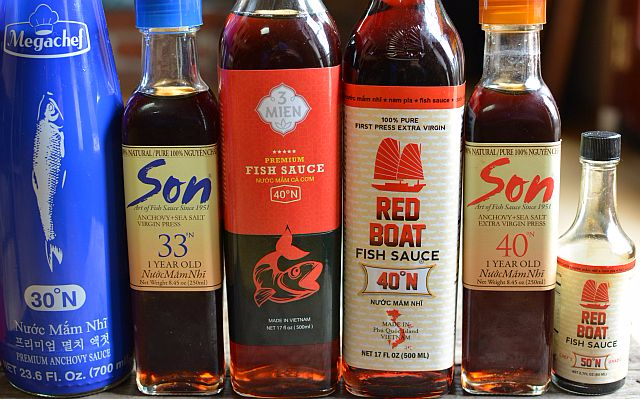
The “N°” rating is a Vietnamese thing. A distributor for Megachef told me that Viet people use the most fish sauce in America. Hence, if you’re going to make fish sauce friendly to Viet customers, include the “N°” on the label. Megachef blue label targets Viet and Korean cooks so they have the Viet terms, the N°, and Korean Hangul script. Doesn’t do much for English language speakers, though!
What is nuoc mam nhi? Also called nuoc mam cot, nuoc mam nhi refers to the first, and most intense liquid to come from the barrel or vat. It’s thick, slightly oily, delicious. It’s not a first pressing like olive oil because the fish sauce comes out of a tube or spigot at the bottom of the vessel that it's been fermented in.
However, similar to olive oil, nuoc mam nhi (“nook mahm ny’ee”) refers to the highest quality of nuoc mam. Such fish sauce is often blended by the manufacturer to get a consistent flavor that’s just right for their customers.
Why is sugar often in fish sauce? Artisanal fish sauce producers like Red Boat and Son do not add sweetener to their condiment but other producers do. What is a strategy for dealing with the difference?
Cooks often add sugar to their food to balance out the flavor and create umami – called dam da in Vietnamese. Something that is dam da (“dum dah”) has a savory-sweet depth. If there’s a little sweetness in fish sauce, it’s easier to use because that savory-sweet depth – that umami, is already part of the fish sauce foundation. When I use a fish sauce that has a little sweetener, my palate can more easily detect when I’ve arrived at the flavor balance that I want. I know when enough nuoc mam has been used.
When I use a fish sauce that does not include any sweetener, I remind myself to add a touch of extra sugar or maple syrup so I may develop the dam da depth I want.
Note that sometimes there’s hydrolylized wheat extract in fish sauce, which gluten-free/celiac people may react to. That ingredient is a flavor enhancer meant to boost umami. Some producers want that extra gravitas.
Why watch the saltiness of fish sauce? Whether or not you’re on a low-sodium diet, look at the sodium count on the label. The number can help you figure out how much to use and potential adjustments. There is a range.
I typically use Megachef of Red Boat so I figure that I’m looking at 1500mg of sodium per tablespoon as the norm in my cooking. Three Crabs comes in around 1800mg of sodium per tablespoon; if that’s what I’ve got to use, I’ll back off my usual quantity.
Aside from the label, fish sauce intensifies as it sits around after it’s been opened. Refrigerate the bottle and make sure the cap is on tight to minimize the aging process. If you find that your fish sauce is saltier and darker than when you first opened the bottle, use a little less. You can always add more!
Fish sauce is salty but it’s not the same as salt. I use fish sauce with salt because they offer two kinds of savory depth. Salt lays a foundation for savoriness and fish sauce adds an umami burst. In that sense, salt allows you to hedge a bit against the differences between brands of fish sauce.
When to add fish sauce to a dish? If you’re following a recipe, do what it says. If you’re winging it in a non-Asian dish like Caesar salad dressing or a tomato-based pasta sauce, you’re likely to want to use it as a stealth ingredient. Use it as sub for anchovies or add it as the sauce simmers and develops flavor. I’ve added a tiny bit to tomato salsas when the tomatoes were not fabulous.
In Vietnamese cooking, nuoc mam is typically added at the beginning and/or end of a dish to finish or tweak flavors. When writing The Pho Cookbook, I realized that fish sauce is somewhat volatile. When it’s added to broth soon before serving, it expresses itself extremely well to unite and punch things up.
Fish sauce has personality. It's not simply fishy. It's a wonderful ingredient to have in your kitchen.
Related posts:













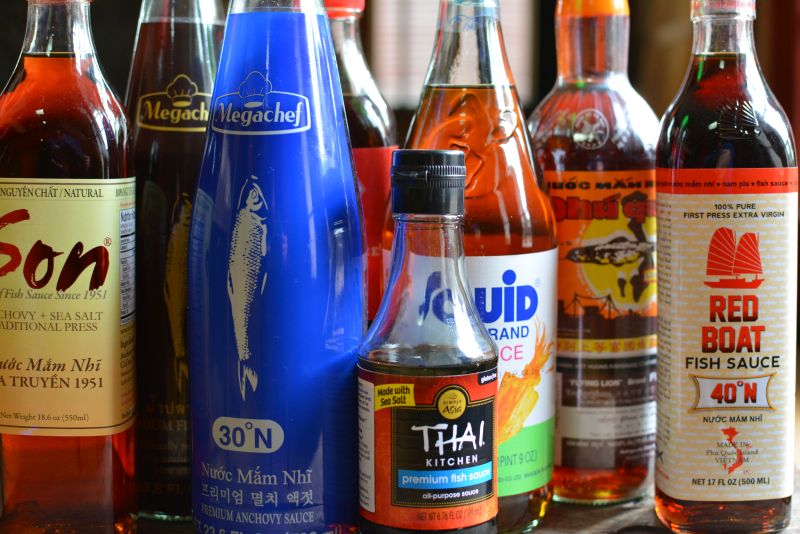
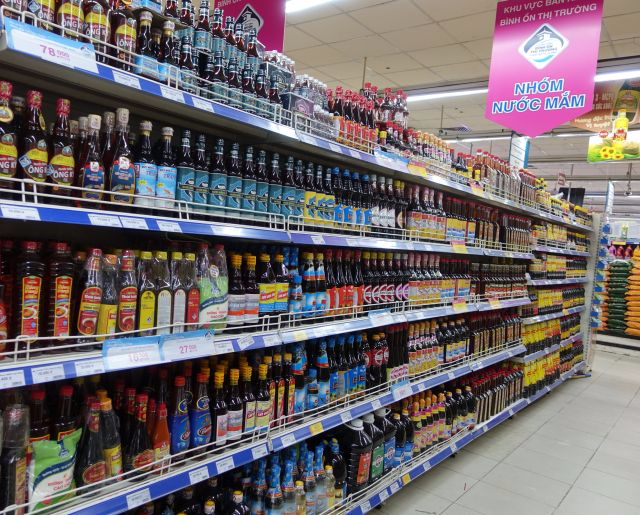
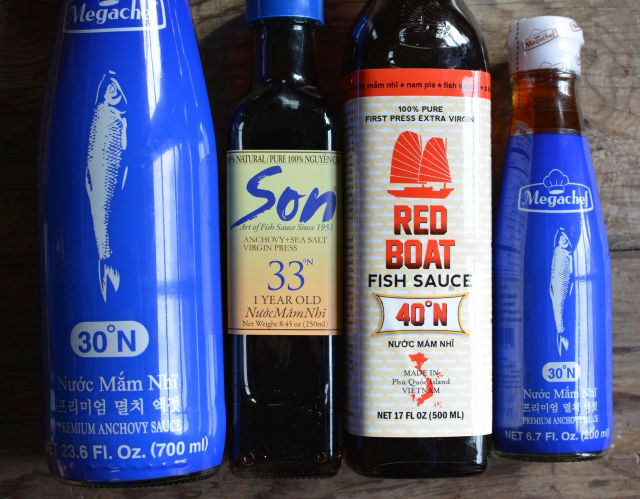

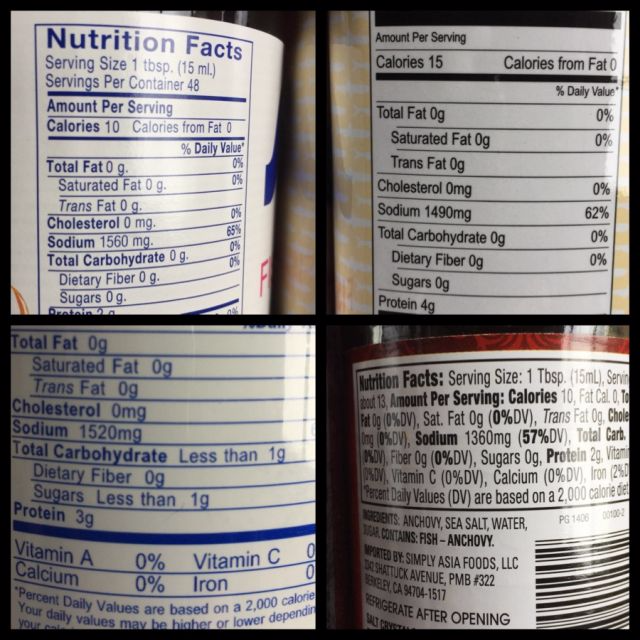


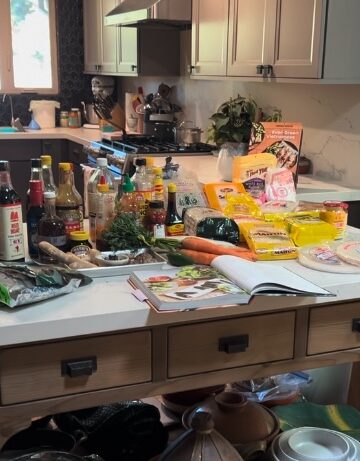

Stacy says
I have a friend from many years ago in the navy. She was from.the Phillipines she used fish sauce in her freshly made pico de gallo..was the best I have ever tasted by far.have you heard if this..i was wondering if I make a half gallon how much to use .or just eye ball it and taste as I go.
Andrea Nguyen says
I sometimes add fish sauce to salsa. I've heard the some folks add chicken bouillon powder to salsa so fish sauce would give a similar umami hit. It helps when the tomatoes are super duper ripe. Just a sprinkle.